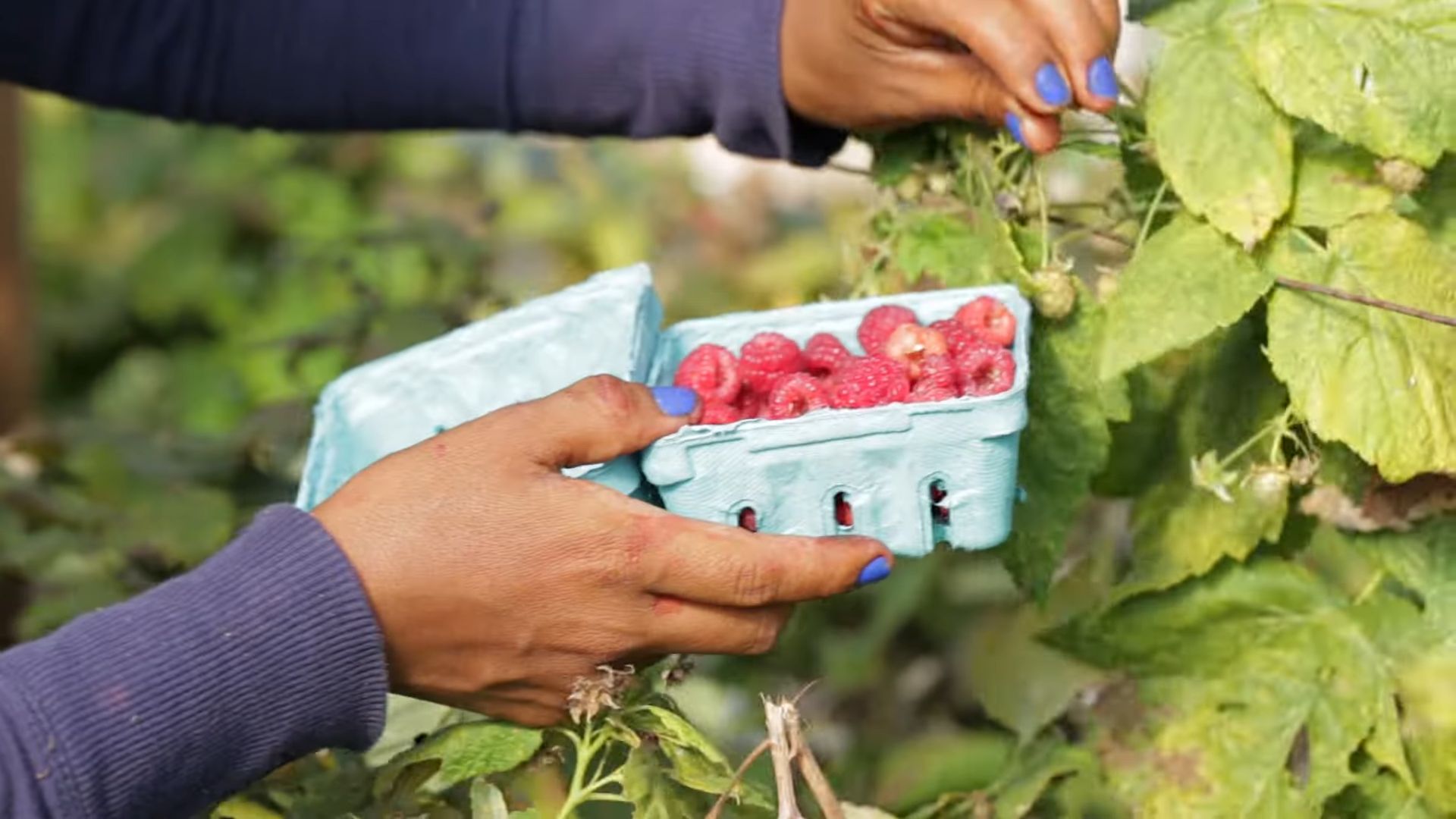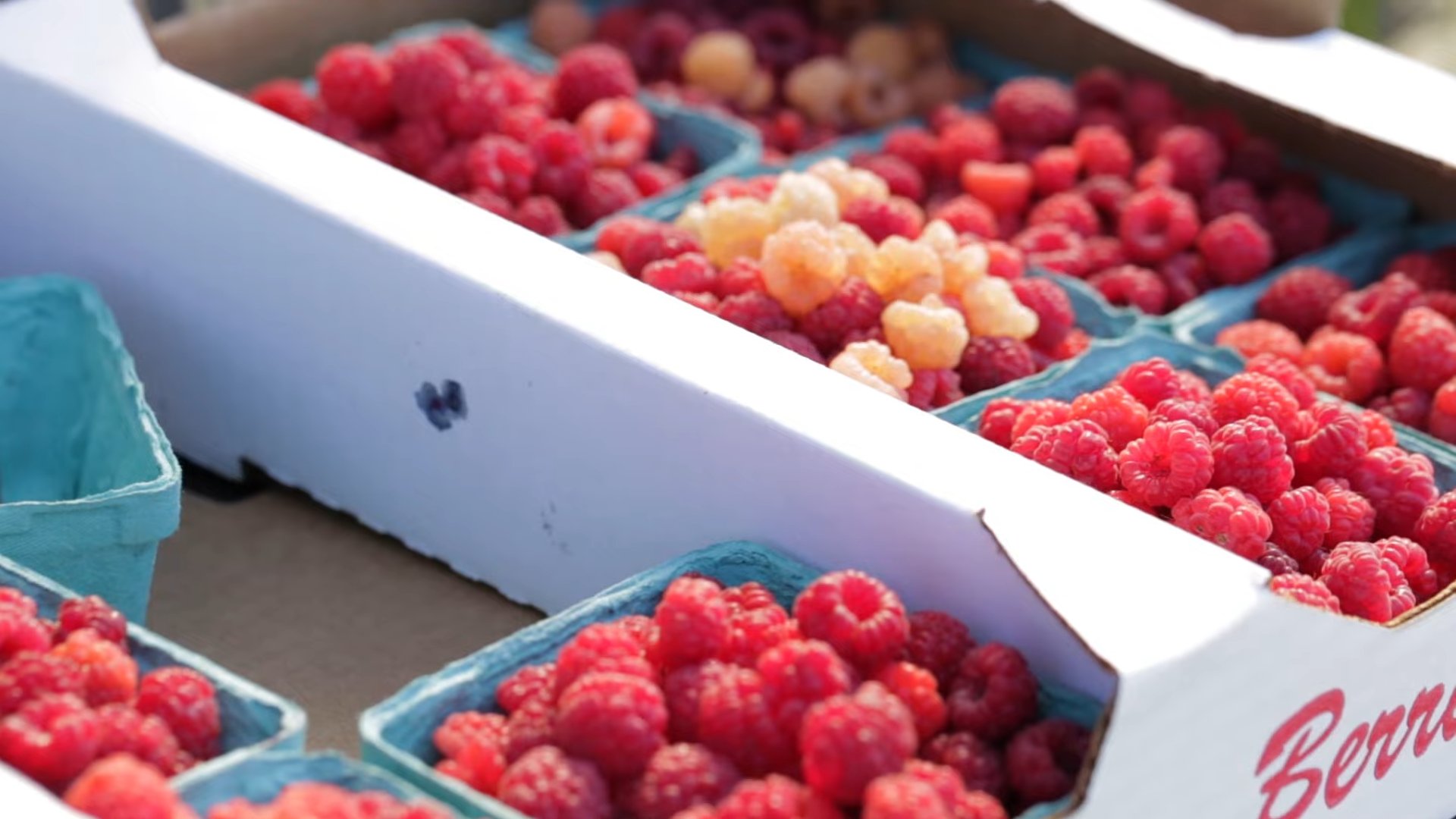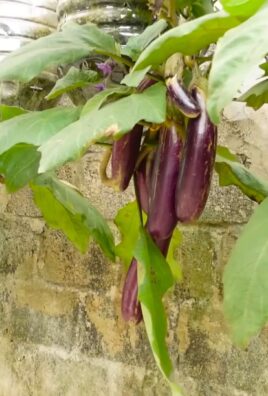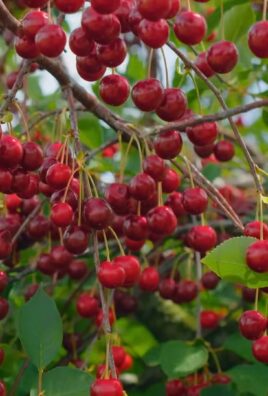Grow Raspberries at Home? Absolutely! Imagine stepping into your backyard and plucking juicy, sun-ripened raspberries straight from the vine. Sounds like a dream, right? Well, it doesn’t have to be! This DIY guide is your passport to a bountiful raspberry harvest, even if you’re a complete beginner.
Raspberries have a rich history, dating back to ancient times where they were prized for their medicinal properties and delicious flavor. From Roman banquets to medieval gardens, these berries have always held a special place in our culinary and cultural landscape. Today, we’re bringing that tradition home, making it easier than ever for you to cultivate your own raspberry patch.
Let’s face it, store-bought raspberries can be expensive and often lack the vibrant flavor of homegrown varieties. Plus, there’s nothing quite like the satisfaction of nurturing your own food from seed (or cane!) to table. This DIY guide will equip you with simple, effective tricks and hacks to grow raspberries at home successfully, regardless of your space or experience. We’ll cover everything from choosing the right variety and preparing your soil to pruning techniques and pest control. Get ready to transform your garden into a raspberry paradise!

Growing Raspberries at Home: A DIY Guide to Bountiful Berries
Okay, raspberry lovers, listen up! I’m going to walk you through everything you need to know to grow your own delicious raspberries right in your backyard. Trust me, there’s nothing quite like the taste of a freshly picked, sun-warmed raspberry. And the best part? It’s totally doable, even if you don’t have a green thumb. Let’s get started!
Choosing Your Raspberry Variety
First things first, you need to decide what kind of raspberries you want to grow. There are two main types:
* Summer-bearing raspberries: These produce one large crop of berries in the summer, usually around June or July.
* Everbearing (or fall-bearing) raspberries: These produce two crops – one in the summer and another in the fall. If you prune them correctly, you can often get a larger fall crop and skip the summer one.
Within those categories, there are tons of different varieties, each with its own unique flavor, size, and disease resistance. Here are a few popular choices:
* ‘Heritage’ (Everbearing): A classic, reliable variety that produces large, flavorful berries in the fall. It’s also known for being relatively easy to grow.
* ‘Nova’ (Summer-bearing): A cold-hardy variety that produces bright red, medium-sized berries with a good flavor.
* ‘Boyne’ (Summer-bearing): Another cold-hardy option, ‘Boyne’ produces smaller, but very flavorful, berries.
* ‘Caroline’ (Everbearing): Known for its exceptional flavor and large berry size, ‘Caroline’ is a popular choice for fall harvests.
* ‘Golden Queen’ (Everbearing): If you’re looking for something different, try ‘Golden Queen’! It produces beautiful golden-yellow raspberries with a sweet, mild flavor.
Important Considerations:
* Climate: Make sure to choose a variety that’s well-suited to your local climate. Check the plant’s hardiness zone to ensure it can survive your winters.
* Space: Consider how much space you have available. Some raspberry varieties can spread quite aggressively, so you might want to choose a more compact option.
* Disease Resistance: Look for varieties that are resistant to common raspberry diseases, such as root rot and cane blight.
Preparing the Planting Site
Raspberries need a sunny spot with well-drained soil. They thrive in slightly acidic soil with a pH between 6.0 and 6.8.
1. Choose a Location: Select a spot that gets at least 6-8 hours of sunlight per day. Morning sun is especially important, as it helps to dry the leaves and prevent fungal diseases.
2. Test the Soil: Before planting, it’s a good idea to test your soil to determine its pH and nutrient levels. You can purchase a soil testing kit at most garden centers or send a sample to your local agricultural extension office.
3. Amend the Soil: Based on your soil test results, amend the soil as needed. If your soil is too alkaline, you can lower the pH by adding sulfur or peat moss. If it’s too acidic, you can raise the pH by adding lime.
4. Improve Drainage: Raspberries hate soggy soil, so good drainage is essential. If your soil is heavy clay, amend it with plenty of organic matter, such as compost, aged manure, or shredded leaves. This will help to improve drainage and aeration.
5. Clear the Area: Remove any weeds, grass, rocks, or other debris from the planting area. Raspberries don’t compete well with weeds, so it’s important to start with a clean slate.
6. Dig a Trench or Individual Holes: Depending on whether you’re planting bare-root raspberries or potted plants, you’ll need to dig either a trench or individual holes. For bare-root raspberries, dig a trench that’s about 12 inches wide and 12 inches deep. For potted plants, dig holes that are twice as wide as the pot and just as deep.
Planting Your Raspberries
Now comes the fun part – planting your raspberries!
1. Soak Bare-Root Plants: If you’re planting bare-root raspberries, soak the roots in water for about an hour before planting. This will help to rehydrate them and give them a good start.
2. Space the Plants: Space summer-bearing raspberries about 2-3 feet apart in rows that are 8-10 feet apart. Space everbearing raspberries about 1.5-2 feet apart in rows that are 8-10 feet apart.
3. Plant at the Correct Depth: When planting bare-root raspberries, make sure the crown of the plant (where the roots meet the stem) is just below the soil surface. For potted plants, plant them at the same depth they were growing in the pot.
4. Backfill with Soil: Gently backfill the trench or holes with soil, making sure to firm the soil around the roots.
5. Water Thoroughly: Water the newly planted raspberries thoroughly to help settle the soil and get them off to a good start.
6. Mulch: Apply a layer of mulch around the plants to help retain moisture, suppress weeds, and regulate soil temperature. Use organic mulch, such as straw, wood chips, or shredded leaves.
Caring for Your Raspberry Plants
Once your raspberries are planted, it’s important to provide them with proper care to ensure a healthy and productive harvest.
1. Watering: Raspberries need consistent moisture, especially during dry periods. Water deeply and regularly, especially when the berries are developing. Aim for about 1-2 inches of water per week.
2. Fertilizing: Fertilize your raspberries in the spring with a balanced fertilizer, such as 10-10-10. Follow the instructions on the fertilizer label. You can also amend the soil with compost or aged manure.
3. Weeding: Keep the area around your raspberries free of weeds. Weeds compete with raspberries for water and nutrients, so it’s important to remove them regularly. Hand-pulling is the best option, as herbicides can damage the raspberry plants.
4. Pruning: Pruning is essential for maintaining healthy and productive raspberry plants. The pruning techniques differ slightly depending on whether you’re growing summer-bearing or everbearing raspberries.
* Summer-bearing raspberries: After the summer harvest, prune out the canes that fruited, cutting them all the way down to the ground. These canes will not produce fruit again. Leave the new, green canes that grew during the summer – these will produce fruit next year.
* Everbearing raspberries: For a larger fall crop, prune all the canes down to the ground in late winter or early spring. This will eliminate the summer crop and encourage a larger fall harvest. If you want to get two crops, prune only the top portion of the canes that fruited in the fall after the harvest. The remaining portion of the cane will produce a summer crop. Then, after the summer harvest, prune out the entire cane.
5. Support: Raspberry canes can get quite tall and heavy, especially when they’re loaded with berries. Provide support for your plants by using a trellis or wire system. This will help to prevent the canes from bending or breaking.
6. Pest and Disease Control: Monitor your raspberry plants regularly for signs of pests or diseases. Common raspberry pests include aphids, spider mites, and Japanese beetles. Common raspberry diseases include root rot, cane blight, and powdery mildew. If you notice any problems, take action promptly to prevent them from spreading. Use organic pest control methods whenever possible.
Harvesting Your Raspberries
The moment you’ve been waiting for! Harvesting your own raspberries is incredibly rewarding.
1. Timing: Raspberries are usually ready to harvest when they are fully colored and easily pull away from the stem. They should be slightly soft to the touch.
2. Technique: Gently grasp the berry and pull it away from the stem. Be careful not to crush the berries.
3. Frequency: Harvest your raspberries every few days, as they ripen quickly.
4. Storage: Store your freshly picked raspberries in the refrigerator. They are best eaten within a few days of harvesting. You can also freeze them for longer storage.
Dealing with Common Raspberry Problems
Even with the best care, you might encounter some problems when growing raspberries. Here are a few common issues and how to deal with them:
* Root Rot: This fungal disease is caused by poorly drained soil. To prevent root rot, make sure your soil has good drainage and avoid overwatering. If you suspect root rot, improve drainage and apply a fungicide.
* Cane Blight: This fungal disease causes dark lesions on the canes. To prevent cane blight, prune out infected canes and avoid overhead watering.
* Powdery Mildew: This fungal

Conclusion
So, there you have it! Growing raspberries at home isn’t just a gardening project; it’s an investment in fresh, flavorful rewards that you can enjoy for years to come. We’ve walked you through the essential steps, from selecting the right raspberry variety for your climate and space to nurturing your plants for optimal growth and delicious fruit production.
Why is this DIY trick a must-try? Because store-bought raspberries simply can’t compare to the taste of freshly picked, sun-ripened berries from your own garden. The difference in flavor is astounding, and you’ll have the satisfaction of knowing exactly where your food comes from and how it was grown. Plus, growing your own raspberries is a sustainable and eco-friendly way to enjoy this delightful fruit. You’ll reduce your carbon footprint by eliminating transportation costs and packaging waste.
But the benefits don’t stop there. Growing raspberries can be a therapeutic and rewarding hobby. Spending time in your garden, tending to your plants, and watching them flourish can be incredibly relaxing and stress-relieving. It’s a chance to connect with nature, get some fresh air and sunshine, and enjoy the simple pleasures of life.
Ready to take your raspberry growing to the next level? Consider these variations and suggestions:
* **Vertical Gardening:** If you’re short on space, try growing raspberries in containers on a trellis or against a wall. This is a great way to maximize your yield in a small area.
* **Companion Planting:** Plant herbs like basil or thyme near your raspberries to deter pests and attract beneficial insects. Marigolds are also excellent companion plants for raspberries.
* **Extending the Season:** Choose a mix of early, mid, and late-season raspberry varieties to enjoy a continuous harvest throughout the summer and fall.
* **Experiment with Varieties:** Don’t be afraid to try different raspberry varieties to find your favorites. Explore the unique flavors and characteristics of red, black, and golden raspberries.
* Raspberry Jam and More: Once you have a bountiful harvest, experiment with making your own raspberry jam, pies, smoothies, or even raspberry-infused vinegar. The possibilities are endless!
We’re confident that with a little effort and patience, you can successfully grow raspberries at home and enjoy a delicious and rewarding harvest. Don’t be intimidated by the process. Start small, learn as you go, and don’t be afraid to ask for help. There are plenty of resources available online and in your local community to support you on your raspberry-growing journey.
So, what are you waiting for? Grab your gardening gloves, choose your raspberry variety, and get started today! We encourage you to try this DIY trick and share your experience with us. We’d love to hear about your successes, challenges, and favorite raspberry recipes. Share your photos and stories on social media using #HomeGrownRaspberries and inspire others to join the raspberry-growing revolution! Happy gardening!
Frequently Asked Questions (FAQs)
What is the best time of year to plant raspberries?
The best time to plant raspberries depends on your climate and the type of raspberry you’re planting. In general, bare-root raspberries are best planted in early spring or late fall when the plants are dormant. Container-grown raspberries can be planted at any time during the growing season, as long as the ground is not frozen. Spring planting allows the plants to establish themselves before the heat of summer, while fall planting gives them a head start on root development before winter. Consider your local climate and consult with a local nursery for specific recommendations.
What kind of soil do raspberries need?
Raspberries thrive in well-drained, slightly acidic soil with a pH between 6.0 and 6.8. The soil should be rich in organic matter and have good drainage to prevent root rot. Before planting, amend the soil with compost, well-rotted manure, or other organic materials to improve its fertility and drainage. Avoid planting raspberries in heavy clay soil or areas where water tends to pool. If your soil is not ideal, consider growing raspberries in raised beds or containers with a suitable potting mix.
How much sunlight do raspberries need?
Raspberries need at least six to eight hours of direct sunlight per day to produce a bountiful harvest. Choose a planting location that receives full sun, especially during the morning hours. While raspberries can tolerate some shade, too much shade will reduce fruit production and increase the risk of disease. If you live in a hot climate, providing some afternoon shade can help protect the plants from excessive heat stress.
How often should I water my raspberry plants?
Raspberry plants need consistent moisture, especially during the growing season. Water deeply and regularly, especially during dry spells. Aim to keep the soil consistently moist but not waterlogged. Avoid overhead watering, as this can promote fungal diseases. Instead, water at the base of the plants using a soaker hose or drip irrigation system. Mulching around the plants can help retain moisture and suppress weeds.
How do I prune my raspberry plants?
Pruning is essential for maintaining the health and productivity of your raspberry plants. The pruning method depends on the type of raspberry you’re growing (everbearing or summer-bearing). Summer-bearing raspberries produce fruit on the previous year’s canes, so prune out the old canes after they have fruited. Everbearing raspberries produce fruit on the current year’s canes, so you can either prune them back to the ground in late winter or prune the top portion of the canes after the first harvest to encourage a second crop. Remove any dead, damaged, or diseased canes at any time of year.
What are common pests and diseases that affect raspberries?
Raspberries are susceptible to several pests and diseases, including aphids, spider mites, raspberry cane borers, and fungal diseases like anthracnose and cane blight. Monitor your plants regularly for signs of infestation or disease. Use organic pest control methods, such as insecticidal soap or neem oil, to control pests. Prune out and destroy any diseased canes to prevent the spread of disease. Ensure good air circulation around the plants to reduce humidity and prevent fungal growth.
Can I grow raspberries in containers?
Yes, you can successfully grow raspberries in containers, especially if you have limited space. Choose a large container with good drainage holes. Use a high-quality potting mix that is well-draining and rich in organic matter. Select a compact or dwarf raspberry variety that is well-suited for container growing. Water regularly and fertilize as needed. Provide support for the canes with a trellis or stake.
How long does it take for raspberry plants to produce fruit?
Raspberry plants typically start producing fruit in their second year after planting. However, some everbearing varieties may produce a small crop in their first year. The amount of fruit produced will increase as the plants mature. Be patient and provide proper care, and you’ll be rewarded with a bountiful harvest in the years to come.
How do I harvest raspberries?
Raspberries are ready to harvest when they are plump, juicy, and easily detach from the plant. Gently pull the berries from the stem, being careful not to crush them. Harvest raspberries in the morning when they are cool and dry. Store harvested raspberries in the refrigerator and use them as soon as possible for the best flavor and texture.
How do I fertilize my raspberry plants?
Raspberry plants benefit from regular fertilization to promote healthy growth and fruit production. Apply a balanced fertilizer in early spring before new growth begins. You can also side-dress the plants with compost or well-rotted manure. Avoid over-fertilizing, as this can lead to excessive vegetative growth and reduced fruit production. Follow the instructions on the fertilizer label for proper application rates. A soil test can help determine the specific nutrient needs of your raspberry plants.





Leave a Comment